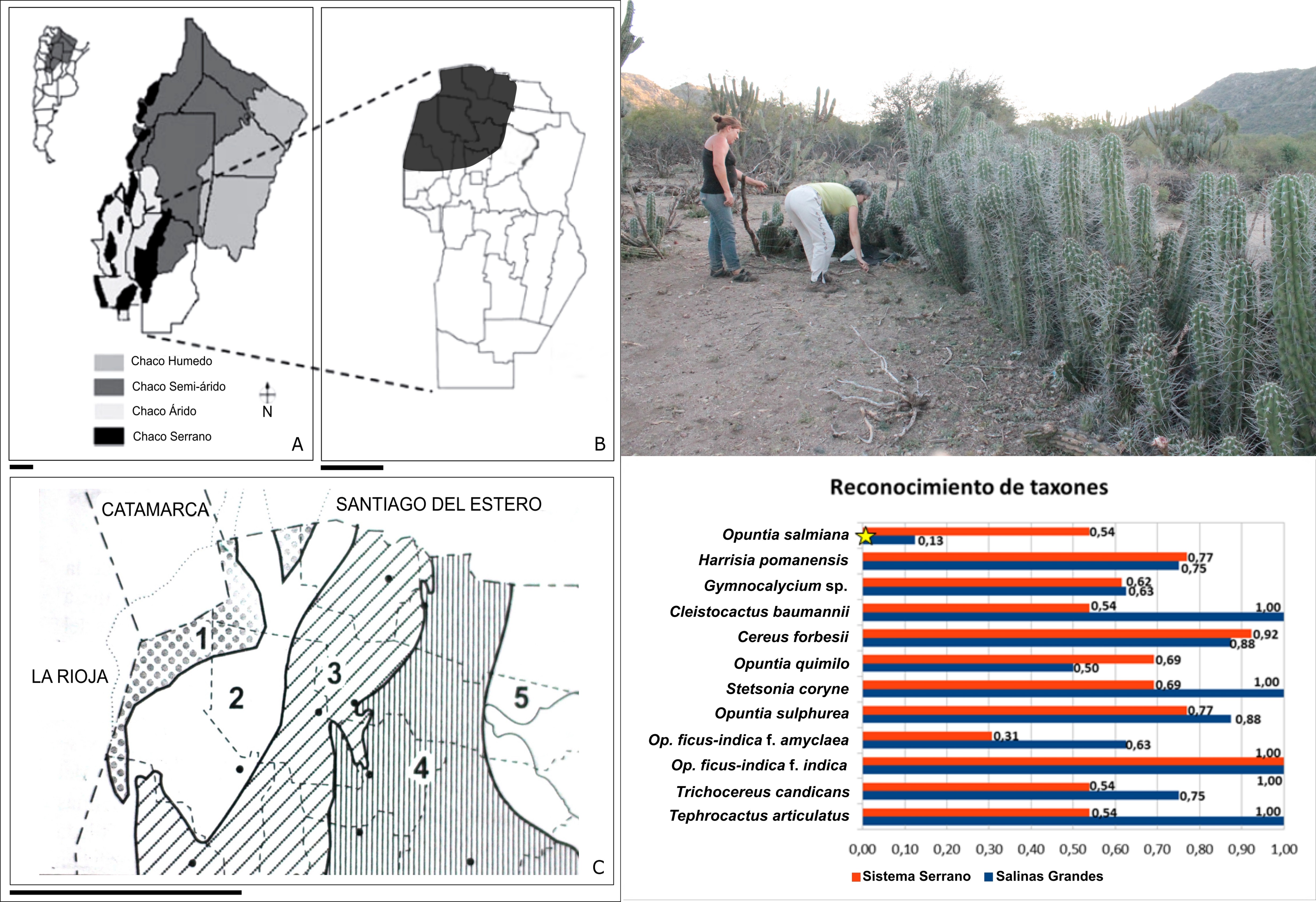Differences in knowledge, valuation and use of cacti among residents of Salinas Grandes and Serrano System (Córdoba, Argentina)
DOI:
https://doi.org/10.31055/1851.2372.v54.n1.23590Keywords:
Cactaceae, changes, ethnobotany, knowledge, small producers, uses.Abstract
Background and aims: The valuation, use and management practices of natural resources of small producers, in general rely on local ecological knowledge (LEK). In order to compare the communities of two physiographic units: Salinas Grandes and Serrano System, the study of LEK on cacti was discussed.
M&M: We performed 21 interviews with key informants about diversity, uses and valuation.
Results: On the one hand, in Salinas Grandes one use and management practice associated with traditions for each taxon were mentioned at least; on the other hand, less types of uses were mentioned by Serrano System’s informants.
Conclusions: In this place, uses related to tourism and commercialization highlight. Residents of Salinas Grandes, who live in extreme aridity conditions and have scarce herbaceous resources available, conserve knowledge linked to traditions which is necessary to ensure their social reproduction, and the Cactaceae appear as key resources for their subsistence. Those of the Serrano System, which have a greater diversity of forage resources, can offer other services and reorient their knowledge towards new activities. This suggest the flexibility of this knowledge (LEK), which allows adjustments to deal with contextual change situations.

Downloads
Published
Issue
Section
License
Provides immediate and free OPEN ACCESS to its content under the principle of making research freely available to the public, which fosters a greater exchange of global knowledge, allowing authors to maintain their copyright without restrictions.
Material published in Bol. Soc. Argent. Bot. is distributed under a Creative Commons Attribution-NonCommercial-ShareAlike 4.0 International license.




